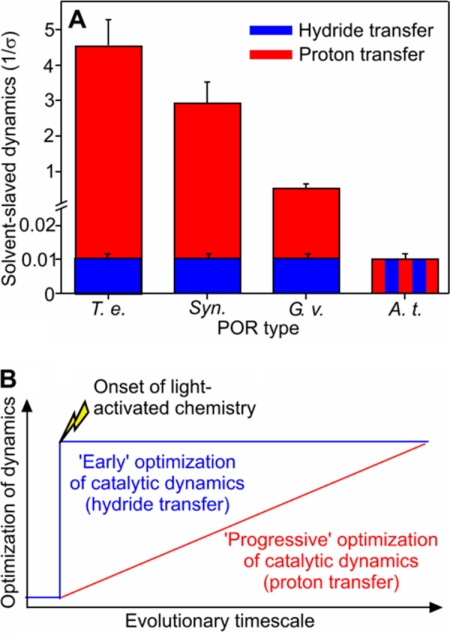FIGURE 5.
Evolution of dynamics in the hydride and proton transfer reactions catalyzed by POR. A, the degree of solvent-coupled dynamics required for the hydride and proton transfer steps for PORs that span the evolutionary spectrum. The relative levels of solvent-coupled dynamics were obtained by fitting the viscosity dependence of the hydride and proton transfer rates (supplemental Fig. S5) to Equation 1. The different POR enzymes are denoted by the following abbreviations: T. e., T. elongatus BP-1; Syn., Synechocystis sp. PCC6803; G. v., G. violaceus; and A. t., A. thaliana POR B. B, scheme illustrating the twin-track approach for the evolution of dynamics in POR. The light-driven hydride transfer step is controlled by localized dynamics in all PORs through conservation of protein structure across evolutionary history (“cliff-edge” effect). Conversely, the dynamics required for proton transfer have evolved gradually, and the chemistry exhibits less reliance on complex dynamic networks in plant PORs.

